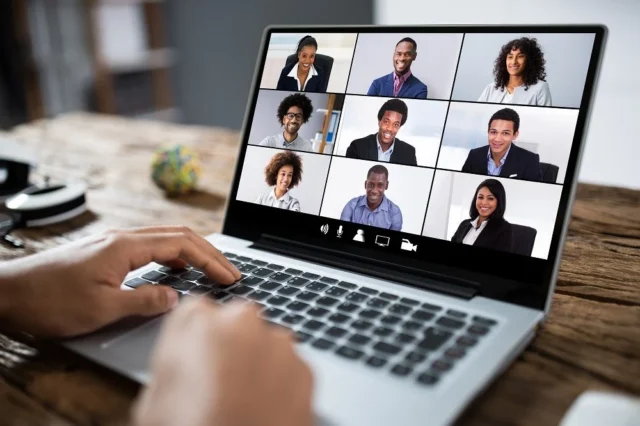In an era where consumer attention spans are dwindling, brands are constantly seeking innovative ways to engage their audience. Enter gamification—the integration of game-like elements in non-gaming contexts to enhance user engagement and drive desired behaviors. In digital marketing, gamification is emerging as a powerful tool that not only captures attention but also fosters customer loyalty and improves conversion rates. Here’s a deep dive into the role of gamification in digital marketing and how businesses can leverage its potential.

Table of Contents
ToggleWhat is Gamification?
Gamification involves incorporating game mechanics such as points, badges, leaderboards, and challenges into marketing strategies to motivate users and encourage participation. By appealing to consumers’ intrinsic motivations—like competition, achievement, and social interaction—brands can create engaging experiences that resonate on a deeper level.
Why is Gamification Important in Digital Marketing?
- Enhances Engagement: Gamification transforms mundane interactions into fun, interactive experiences. This increased engagement can lead to higher participation rates in campaigns, events, or promotions.
- Encourages Customer Loyalty: By rewarding customers for their actions—such as purchases, social shares, or feedback—brands can cultivate loyalty. Customers are more likely to return when they feel appreciated and recognized.
- Increases Brand Awareness: Engaging games or challenges can go viral, significantly expanding a brand’s reach. The social nature of gamified experiences encourages users to share with their networks, amplifying brand visibility.
- Provides Valuable Data: Gamification can help collect valuable consumer data. By tracking user interactions and behaviors within gamified elements, brands gain insights into preferences, trends, and engagement patterns.
- Encourages Learning: Gamification can be used to educate consumers about products or services in a fun and engaging way. This approach can enhance understanding and retention, leading to more informed purchasing decisions.
Effective Gamification Strategies in Digital Marketing
To harness the power of gamification effectively, brands should consider the following strategies:
1. Loyalty Programs
Transform traditional loyalty programs by adding gamified elements. For example, create tiered rewards based on points earned for purchases, social media engagement, or referrals. Customers can unlock exclusive perks as they advance through levels, making the loyalty program more engaging.
2. Quizzes and Challenges
Interactive quizzes or challenges not only entertain but also educate consumers about a brand’s products or services. For instance, a beauty brand could create a skincare quiz that recommends products based on users’ skin types, providing personalized recommendations while encouraging users to share their results.
3. Social Media Contests
Leverage social media platforms to run gamified contests that encourage user participation. Brands can ask users to share photos or videos using a specific hashtag, rewarding the best submissions with prizes. This not only increases engagement but also generates user-generated content that enhances brand authenticity.
4. Interactive Content
Incorporate gamification into interactive content such as polls, surveys, or games that educate users about a brand’s offerings. For example, an educational platform could create a trivia game that tests users’ knowledge while offering discounts for high scores.
5. Leaderboards and Competitions
Integrate leaderboards to create a sense of competition among users. Brands can reward top performers with exclusive discounts or recognition. This approach can be particularly effective in fitness apps, where users can compete against each other to achieve fitness goals.
Successful Examples of Gamification in Digital Marketing
- Nike+: Nike’s fitness app gamifies running by allowing users to set goals, track their progress, and compete with friends. Users earn badges for achievements, fostering motivation and community engagement.
- Starbucks Rewards: Starbucks uses a gamified loyalty program where customers earn stars for purchases, unlocking rewards and personalized offers as they accumulate points. The tiered system encourages frequent visits and spending.
- Duolingo: The language-learning app incorporates gamification by offering levels, achievements, and a leaderboard. Users are motivated to practice daily through reminders and rewards, making learning more enjoyable.
Challenges of Gamification
While gamification offers numerous benefits, it also comes with challenges. Brands must ensure that gamified elements align with their overall marketing goals and resonate with their target audience. Overly complicated mechanics can lead to frustration, while poorly designed experiences may fail to engage users effectively.
Conclusion
Gamification is revolutionizing digital marketing by transforming the way brands interact with their audience. By creating engaging, interactive experiences that motivate and reward users, brands can enhance customer loyalty, increase engagement, and drive conversions. As competition in the digital landscape intensifies, integrating gamification into marketing strategies will not only set brands apart but also foster deeper connections with their consumers. Embrace the power of gamification to create memorable experiences and watch your brand thrive in 2024 and beyond!


No responses yet